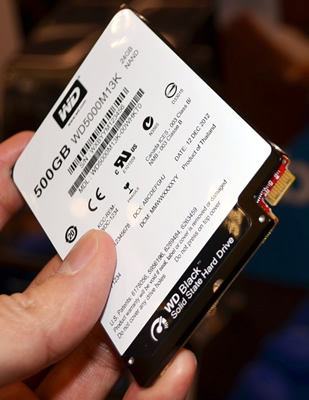Earlier this week, Western Digital debuted the fruit of a partnership with SanDisk: a line of solid state hybrid drives bearing its "Black" branding. In light of the announcement, WD vice president Matt Rutledge recently discussed with The Tech Report details regarding the company's newly release flash-mechanical hybrid and how it differs from other SSHDs.
It seems the biggest difference between Western Digital's SSHDs and competitors' is their software-based design. Where most offerings rely upon a hardware-based marriage of flash and mechanical storage which is essentially invisible to the host operating system, WD has taken a driver-level approach. Rutledge informed TTR that "Black" owners will have a choice between WD's proprietary driver or Intel's more general-purpose SRT driver, but ultimately, software is required to take full advantage of its integrated flash hardware.
WD Black SSHDs have two parts: an 8 to 24GB Sandisk iSSD flash part and a 5400 RPM mechanical storage part. These two parts are bridged together, but both the SSD and HDD portions retain their own controllers. Effectively, WD's Black hybrid drives sound like two independent storage devices knitted together by software.
The "5400 RPM" figure may come as a surprise for SSHDs carrying the "Black" moniker; however, Rutledge suggested that RPMs simply aren't important when it comes to hybrids. Benchmarks are likely to test this presumption very soon.
Although Rutledge's claim hasn't proven entirely true with other manufacturers, he may be mostly correct in terms of typical day-to-day file operations. The precise impact of slower spindle speeds, however, is likely to depend on the company's caching scheme and will certainly vary with usage.
Interestingly, WD's drives are equipped with both MLC and SLC flash technologies. MLC provides higher storage capacity at lower prices, but at the expense of write performance and durability. SLC is pricier, but offers superior write speeds and longevity. WD compartmentalizes the two, designating MLC to handle mostly reading while SLC is relegated to mostly writing.
